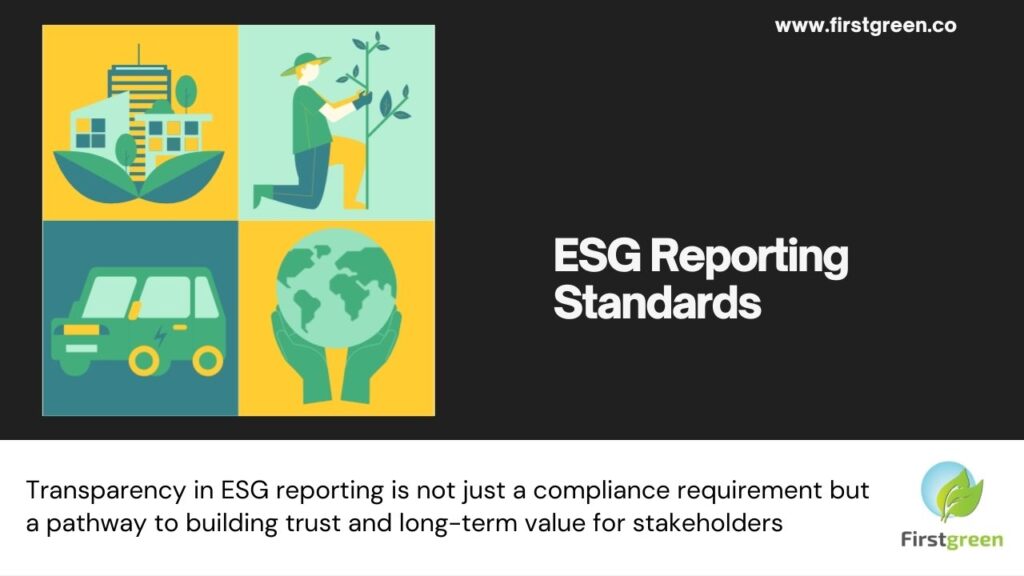
In the evolving landscape of Environmental, Social, and Governance (ESG) reporting, businesses are increasingly held accountable for their sustainability practices. With various frameworks and standards to consider, it can be challenging to determine the best approach for your organization. Here, we explore the most prominent ESG reporting frameworks and provide insights on how to align your sustainability reporting with these standards.
Understanding the ESG Reporting Landscape
Global Reporting Initiative (GRI):
The GRI provides a comprehensive set of standards for reporting on a wide range of sustainability impacts. It emphasizes transparency and accountability, requiring businesses to conduct materiality assessments to identify key topics.
Sustainability Accounting Standards Board (SASB):
SASB offers industry-specific standards focused on how sustainability issues impact financial performance. With 77 sectoral standards, SASB helps companies identify financially material sustainability topics.
Carbon Disclosure Project (CDP):
CDP is a global platform for environmental disclosures, including climate, water, and forestry. Companies can benchmark themselves against peers through CDP’s scoring process.
Sustainable Development Goals (SDGs):
Adopted widely by businesses, the 17 SDGs provide a framework for addressing global challenges and engaging with a broad range of stakeholders.
Task Force on Climate-related Financial Disclosures (TCFD):
TCFD offers guidance on disclosing climate-related risks and opportunities, focusing on governance, strategy, risk management, and metrics.
UN Global Compact:
This voluntary initiative encourages businesses to implement ten sustainability principles covering human rights, labor, environment, and anti-corruption.
ESG standards:
| Framework | Description | Audience/Focus |
|---|---|---|
| Global Reporting Initiative (GRI) | Provides comprehensive standards for reporting on a wide range of sustainability impacts. Emphasizes transparency and accountability through materiality assessments. | All stakeholders, focusing on societal and environmental impacts. |
| Sustainability Accounting Standards Board (SASB) | Offers industry-specific standards that highlight how sustainability issues impact financial performance. Contains 77 sectoral standards. | Investors, focusing on financial materiality. |
| Carbon Disclosure Project (CDP) | A platform for environmental disclosures on climate, water, and forestry. Allows companies to benchmark against peers with a scoring process. | All stakeholders, focusing on environmental impact and governance. |
| Sustainable Development Goals (SDGs) | A set of 17 global goals adopted by businesses to address various sustainability challenges. | All stakeholders, focusing on societal impacts. |
| Task Force on Climate-related Financial Disclosures (TCFD) | Provides guidance on disclosing climate-related risks and opportunities, covering governance, strategy, risk management, and metrics. | Investors and financial stakeholders, focusing on climate impact. |
| UN Global Compact | A voluntary initiative that encourages businesses to implement ten sustainability principles covering human rights, labor, environment, and anti-corruption. | All stakeholders, with an annual progress update required. |
Choosing the Right Framework
Selecting the right ESG reporting framework depends on various factors, including your industry, stakeholder expectations, and specific sustainability goals. Companies often align with multiple frameworks to meet diverse reporting needs and enhance transparency.
The Reporting Process
Implementing an effective ESG reporting process involves several key steps:
- Prepare and Scope: Define your reporting goals and develop a timeline.
- Determine Materiality: Conduct a materiality assessment to identify key topics.
- Define Approaches: Establish sustainability management approaches and KPIs.
- KPI Analysis: Collect and analyze relevant data.
- Content Creation: Design and create the report, including writing and graphics.
- Review and Publish: Conduct an executive-level review and publish the final report.
The Role of Technology
Digital reporting platforms enhance accessibility and allow for efficient data collection and analysis. Leveraging technology can streamline the reporting process and ensure compliance with evolving regulations.
Conclusion
ESG reporting is a dynamic and complex field, but with the right approach, businesses can navigate this landscape effectively. By aligning with recognized standards and leveraging technology, companies can enhance their sustainability performance and build long-term value for all stakeholders.
Hashtags: #ESG #Sustainability #GRI #SASB #CDP #SDGs #TCFD #UNGlobalCompact #ESGReporting #SustainabilityReporting
